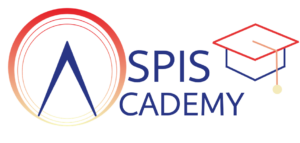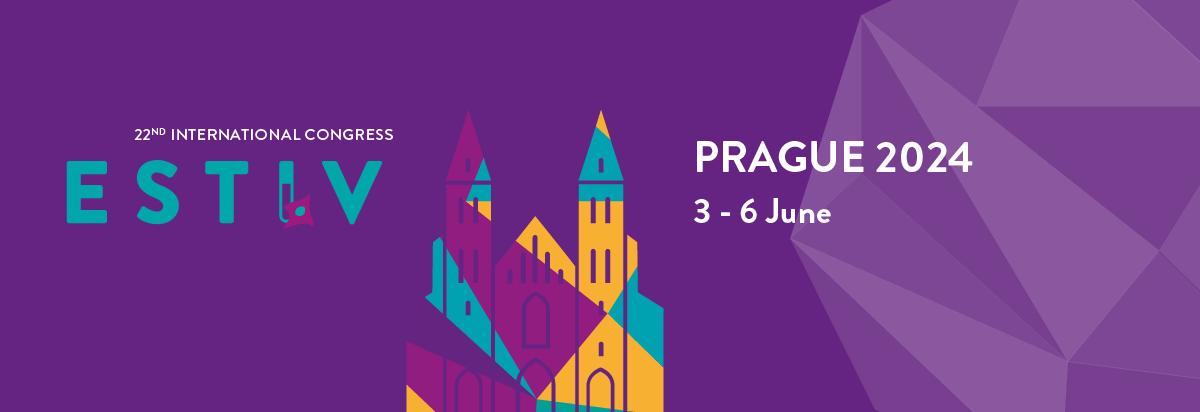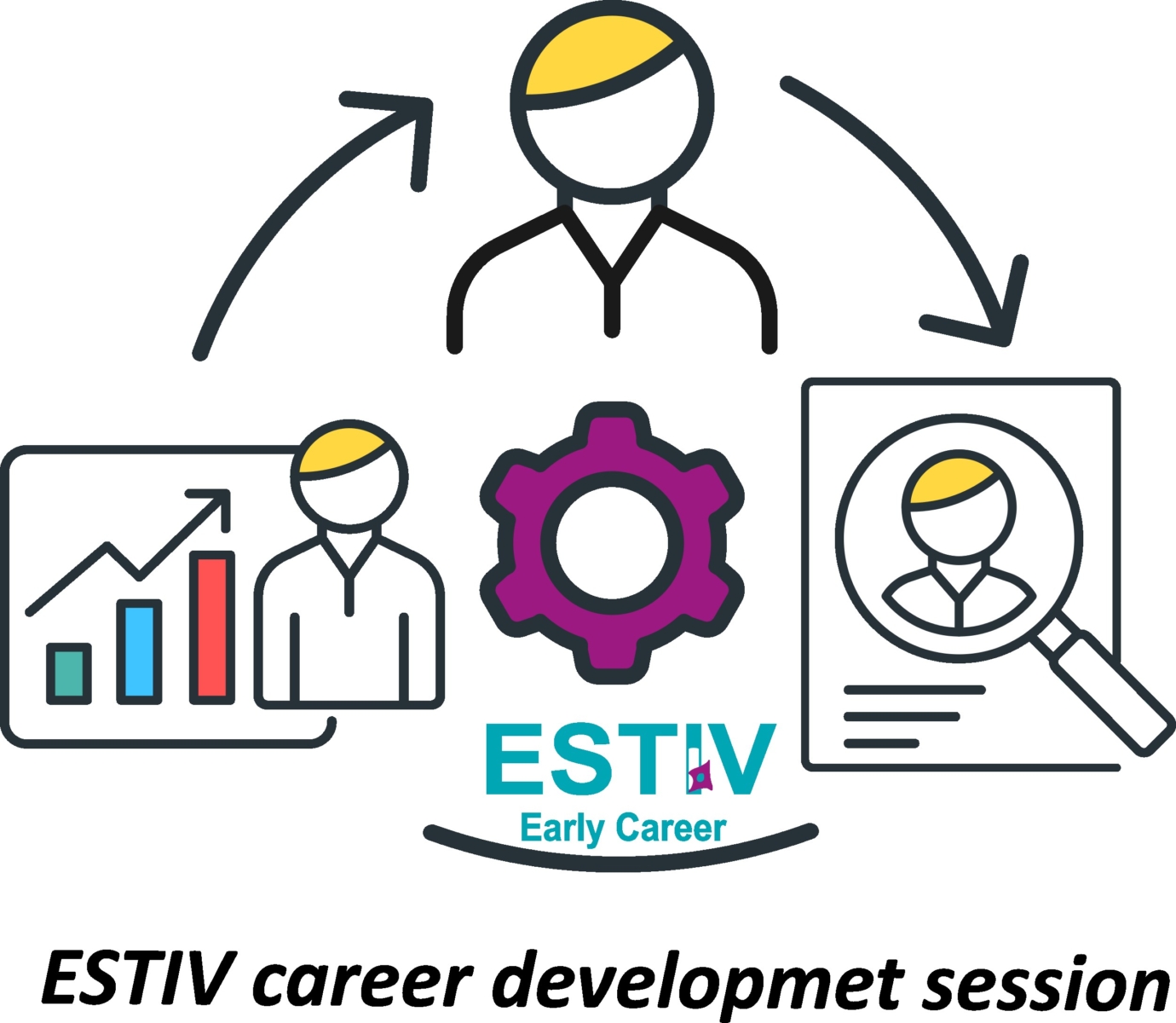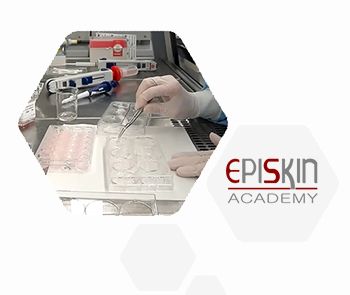The complete ESTIV 2024 programme including practical information is now available. Download the programme below. The full programme does not include the poster list. For poster information we kindly refer to the Poster Page by clicking here.
The abstract book can be found here.
- ECHA, EMA and EFSA perspective#ECHAs on the use of NAMs / Funding the development, validation, and implementation of NAMs
- Models, biomarkers and assays for endocrine disruption
- Challenges in cosmetics safety
- Models, biomarkers and assays for systemic and immune toxicity
- Organ-on-a-chip & Microphysiological Systems
- Computational toxicology – in silico modelling, read-across, artificial intelligence and machine learning
- Local toxicity testing (safety and efficacy)
- Industry session – In vitro inhalation toxicity and future trends for Fiber Safety assessment
- Peer Review for Validation Studies – building confidence and transparency into a new validation paradigm
- Non-animal methods for safety testing of biopharmaceuticals/biotherapies/vaccines
- Knowledge sharing and education
- Toxicokinetics and in vitro – in vivo extrapolation
- In vitro systems to assess respiratory toxicity
- Bio-engineering, stem cells and disease models
- Towards Liver models
- Models, biomarkers and assays for developmental toxicity
- Cardiotoxicity and cardiac efficacy models
- Case studies for successful use and implementation of complex in vitro models
- Complex chemical mixtures – how can NAMs contribute?
- Regulatory considerations for complex NAMs
- In vitro and in silico methods for safety assessment of medical devices
- Early Stage Researcher Session 1
- Early Stage Researcher Session 2
- Debate session
- Career development session
Instructions for Oral and Poster Presenters
ESTIV Accepted posters list
Draft Scientific Programme – Session details
The programme may still be subject to minor changes
Monday, June 3rd, 2024

09:00-13:00: Pre-conference workshop -How to write and manage a successful EU Horizon proposal: From initial idea to execution (organised with ONTOX)
Chairs: Prof Mathieu Vinken (VUB, Brussels, Belgium) & Dr Helena Kandarova (CEM SAS, Bratislava, Slovakia)
13:00-14:00: Lunch break
14:00-14:20: Opening Ceremony of the ESTIV 2024 Congress
XPLOSION Violin Trio
Chairs: Dr Helena Kandarova (CEM SAS, Bratislava, Slovakia) & Dr Clive Roper (Roper Toxicology Consulting Limited, Edinburgh, UK)
14:20-15:00: Keynote lecture I – PD Dr. Robert Landsiedel, DABT, FATS – Star Wars on Ceres. Episode I – The irreproducibility menace
Chairs: Dr Helena Kandarova (CEM SAS, Bratislava, Slovakia) & Dr Clive Roper (Roper Toxicology Consulting Limited, Edinburgh, UK)
15:00-16:00 ESTIV Early Scientific Career Award ceremony 2024 and Lecture
Chairs: Dr Helena Kandarova (CEM SAS, Bratislava, Slovakia) & Dr Clive Roper (Roper Toxicology Consulting Limited, Edinburgh, UK)
16:00-16:30: Coffee break, visiting exhibition area & poster viewing
16:30-18:30: Session 1 – ECHA, EMA and EFSA perspectives on the use of NAMs / Funding the development, validation, and implementation of NAMs
Chairs: Dr Costanza Rovida (TEAM mastery S.r.l., Como, Italy) & Dr Clive Roper (Roper Toxicology Consulting Limited, Edinburgh, UK)
- Costanza Rovida – Counting the number of animals that REACH and CLP are requesting as the first step to start accepting NAMs
- Lucian Farcal – Guidance on the use of biomarkers of effect in regulatory risk assessment of chemicals – integration of new approach methodologies
- Maria Chiara Astuto – EFSA’s ongoing and planned activities in the application of NAMs for the risk assessment of chemicals
- Taina Palosaari – Accelerating Validation through In Vitro Method Automation and High Throughput Testing
- Philippe Hubert – Validating NAMs: Experience gained on the PEPPER Platform
18:30-20:00: Welcome reception & Poster session I
Tuesday, June 4th, 2024
08:30-09:00 Keynote Lecture II – Prof. Dr. Theo M. de Kok, ERT – Safety assessment of the food additives without animal testing: Case study – E171 (titanium dioxide) .
09:00-10:30: Session 2a – Models, biomarkers and assays for endocrine disruption
Chairs: Christian Pellevoisin (Urbilateria & Vitroscreen, France) and Prof Arno Gutleb (Invitrolize & Luxembourg Institute of Science and Technology LIST, Luxembourg, Luxembourg)
- Daniela Lange – Evaluation of in vitro and in silico new alternative methods for the identification of potential endocrine effects
- Christian Pellevoisin – A 3d model applicable to reproductive toxicology
- Kim Heikamp – Human based brain barrier models for studying thyroid hormone transport
- Petra Mikušová – The identification of thyroid hormone-disrupting chemicals from complex environmental mixtures using pull-down assay coupled with non-target analysis
- Runze Liu – Novel in vitro assay for thyroperoxidase inhibition – comparison of different models and detection methods
09:00-10:30: Session 2b – Challenges in cosmetics safety
Chairs: Dr Bambou Tan (L’Oréal, Paris, France) and Erin Hill (ICCS, New York, USA)
- Andy Forreryd – Improved confidence of quantitative sensitizing potency assessment for point of departure using Gardskin dose-response
- Fleur Tourneix – Deriving a continous point of departure for skin sensitization assessment using a bayesian network model
- Johanna Ebmeyer – A novel 3d Nrf2-are reporter epidermis model for skin sensitization testing
10:30-11:00: Coffee break, visiting exhibition area & poster viewing
11:00-13:00: Session 3a – Human Cells as New Approach Methodologies for Immunotoxicity Testing
Chairs: Dr Victor J. Johnson (Burleson Research Technologies, Inc., Morrisville, NC, USA) and Prof Emanuela Corsini (Università degli Studi di Milano, Milan Italy)
- Victor J. Johnson – Building a comprehensive toolbox for Immunotoxicology safety assessment using human whole blood.
- Emanuela Corsini – Using in vitro human immune system models to understand the immunotoxicity risks associated with PFAS exposure
- Fenna Sillé – A Path Forward: Current and Future Perspectives of Alternatives to Developmental Immunotoxicity Testing
- Norbert E. Kaminski – Human cord blood derived CD34+ hematopoietic stem cells as an in vitro model for investigating developmental immunotoxicity
- Mélanie Mourot-Bousquenaud – In vitro assessment of the sensitizing potential of bisphenol A substitutes
11:00-13:00: Session 3b – Organ-on-a-chip & Microphysiology systems
Chairs: Dr Benoît Maisonneuve (NETRI, Lyon, France) and Dr Erika Ferrari (BiomimX, Milano, Italy)
- Erika Ferrari – Evaluating the potential of novel physiologic-like liver-on-chip models for in vitro hepatotoxicity screening
- Kaushal Joshi – A pilot study to evaluate the kinetics, metabolism, and toxicity of a fragrance material (coumarin) in an in vitro three-organ integrated microphysiological system (MPS) model
- Maria-Jose Ruiz – Cytotoxic effects induced by individual and combined exposure to sterigmatocystin, ochratoxin A, and patulin on sh-sy5y spheroids
- Marie-Gabrielle Zurich – Novel strategy to assess the neurotoxicity of organic solvents such as glycol ethers: combining in vitro and in silico methods with human-controlled exposure experiments
- Ovidiu Novac – A sensitive and robust human liver microphysiological system for assessing drug-induced liver injury
- Eileen Hallscheidt – Oral absorption and intestinal first-pass metabolism of pesticides using an in vitro human gut-model
13:00-14:00: Lunch break, visiting exhibition area & poster viewing

13:00-14:00: ASPIS Training Academy session – Organised by Early Career scientists of ONTOX, RiskHunt3Rs and PrecisionTox
14:00-16:00: Session 4a – Computational toxicology – in silico modelling, read-across, artificial intelligence
Chairs: Prof Thomas Hartung (Johns Hopkins Bloomberg School of Public Health and the Whiting School of Engineering, Baltimore, USA) and Emily Reinke (Inotiv, Research Triangle Park, NC, United States)
- Emily Reinke – Case studies for the sara-ice defined approach for skin sensitization – application to different chemistries
- Fresnais Louison – Metabolic mechanisms of action modelling to sustain safety evaluation of cosmetic ingredients
- Prachi Pradeep – New approach methods for regulatory risk assessment of azo dyes in textiles
- Simon Perera del Rosario – Anthrodrugs-tox: personalized toxicology through population genetics
- Vijay Gombar – Integration of multi-domain data and interpretable in-silico models for computational toxicology
14:00-16:00: Session 4b – Local toxicity testing (safety and efficacy)
Chairs: Dr Helena Kandarova (CEM SAS, Bratislava, Slovakia) and Dr Eugene Choi (OECD, Paris, France)
- Marco Pelin – Adoption of OECD TG 439 and 431 for the assessment of skin irritation and corrosion properties of 2D nanomaterials
- Maria Laura Gutierrez – Eye damage reversibility in an in vitro model of bovine cornea to replace the Draize test completely
- Rodrigo Azevedo Loiola – The Interleukin-18 is an in vitro biomarker for the prediction of photosensitization in reconstructed human epidermis: the development of photosensil-18 method for the safety assessment of raw materials and finished products
- Vérane Bard – Toxicity of polylactic acid and polyethylene terephthalate nanoplastics, aged in environmental conditions, on human intestinal cells
16:00-16:30: Coffee break, visiting exhibition area & poster viewing
16:30-17:30: Early Stage Researcher Session 1
Chairs: Marketa Dvořáková (NIPH Prague, Praha, Czech Republic) and Mohamed Fathi Abdallah Abdelmohsen (Ghent University, Ghent, Belgium)
- Arunima Sengupta – A new lung-on-chip inhalation platform for toxicity and therapy assessment
- Eliška Řehůřková – Utilizing human induced pluripotent stem cells to enhance in vitro leydig cell models for reproductive health research
- Eliška Sychrová – Male reproductive toxicity of real-life PFAS mixtures: an AOP-based investigation
- Giulia De Negri Atanasio – Evaluation of physiological repeated exposure of aluminium in a 3d intestinal tissue model
16:30-17:30: Industry session – In vitro inhalation toxicity and future trends for Fiber Safety assessment
Chairs: Prof Arno Gutleb (Invitrolize & Luxembourg Institute of Science and Technology LIST, Luxembourg, Luxembourg) and Dr Samuel Constant (Epithelix, Plan-les-Ouates, Switzerland)
- Amy Madl – Toxicology of synthetic vitreous fibers (svfs): Historical overview and outlook for next generation new approach methods (NAMs)
- Annette Bitsch – The problem of lung overload in animal studies
- Samuel Constant – Advanced immunocompetent in vitro primary human lung models for point-of-contact toxicity evaluation of man-made vitreous fibres (mmvf)
17:30-18:30: Early Stage Researcher Session 2
Chairs: Marketa Dvořáková (NIPH Prague, Praha, Czech Republic) and Mohamed Fathi Abdallah Abdelmohsen (Ghent University, Ghent, Belgium
- Ignacio Risueño -A novel way to measure cell viability with electrochemical sensing for in vitro skin testing
- Julia Nöth -Analysis of vascular disruptors in zebrafish embryos – an endpoint of developmental toxicity
- Krupansh Desai -In vitro biocompatibility assessment of engineered living materials: a high throughput strategy
- Laurie Perdigon -Successful generation of three-dimensional human precision-cut lung slices for pulmonary fibrosis modeling
- Liyi Tan – Toxic effects of metal oxide nanoparticles on healthy and psoriatic-like human epidermal keratinocytes
- Peter Pôbiš – Development of sensitive in vitro protocols for biocompatibility testing of medical devices and pharmaceuticals intended for contact with eyes:
17:30-19:30: Peer Review for Validation Studies – building confidence and transparency into a new validation paradigm
Chairs: Amanda Ulrey (IIVS, Gaithersburg, USA) and João Barroso (JRC, Ispra, Italy)
- João Barroso -The art of validation and peer review: evolving practices while ensuring scientific confidence
- G. Frank Gerberick – Ensuring transparency and rigor in the peer review of new approach methods for skin sensitization assessment
- Hervé Groux – Peer review for validation studies – building confidence and transparency into a new validation paradigm- the test developer perspective
- Sebastian Hofmann – Comprehensive reporting of validation studies starts at inception and ends with peer review
- Amanda Ulrey – Assessing data integrity: a deep dive into data review in method validation
- Emily Reinke – Peer review for validation studies – building confidence and transparency into a new validation paradigm
18:30 – 19:30: ESTIV General Assembly
Poster Session II
Participants with even-numbered posters are required to be physically present at their posters for presentation and questions during this poster session.
Wednesday, June 5th, 2024
08:30-09:00 Keynote Lecture III – Prof. Mathieu Vinken – Ontologies as the basis for setting up animal-free test batteries: liver toxicity as a case study
09:00-10:30: Session 5a – PARC session – Partnership for the Assessment of Risks from Chemicals
Chairs: Prof Denis Sarigiannis (Aristotle University of Thessaloniki, Greece) and prof Philip Marx-Stoelting (German Federal Institute for Risk Assessment, Berlin, Germany)
- Denis Sarigiannis – Safe and Sustainable by Design
- Gilles Riviere – Hazard Assessment in PARC
- Sebastian Schmeisser – NGRAroute andd PARCopedia
- Dimitra Nikolopoulou – How PARC can contribute to promoting the regulatory uptake of NAMs
09:00-10:30: Session 5b – Knowledge sharing and education
Chairs: Dr. Bambou Tan (LOreal, Paris, France) and Erin Hill (ICCS, New York, USA)
- Bambou Xuezhu TAN – Storytelling skills for a more effective scientific communication
- Beta Montemayer – Skills for Next-Generation Safety Scientists in Cosmetics: Bridging Academic Expertise to Industry Relevance
- Erin Hill – International Collaboration for Cosmetics Safety (ICCS): Accelerating Global Adoption of Animal-Free Safety Science for Cosmetic Product and Ingredient Safety Assessment
- Philipp Paulitschke – New non-invasive, label-free monitoring approach for 2D and 3D cell culture
- Pascale Mora – Continuing education for next-generation risk assessment
10:30-11:00: Coffee break, visiting exhibition area & poster viewing
11:00-13:00: Session 6a – Toxicokinetics and in vitro–in vivo extrapolation
Chairs: Jochem Louisse (European Food Safety Authority EFSA, Parma, Italy) and Andreas Schepky (Beiersdorf AG, Hamburg, Germany)
- Andreas Schepky – Relevance of Toxicokinetics and ADME methods in Quantifying Exposure for Next generation Risk Assessment
- Daniela Brenner – Toxicokinetic assessment of perfluorooctanoic acid and perfluorooctanesulfonic acid in a 2-dimensional in vitro liver model
- Elena Reale – Next-generation risk assessment for diterpene glycosides
- Evita Vandenbossche-Goddard – A workflow for true dose considerations of in vitro test systems which are used as part of next-generation risk assessment
- René Geci – High-throughput PBK modelling providing insights into ADME/TK in systemic toxicity
- Jochem Louisse – Towards a quantitative interpretation of in vitro DNT data using PBK-modelling based QIVIVE
11:00-13:00 Session 6b – In vitro systems to assess respiratory toxicity
Chairs: Prof Arno Gutleb (Invitrolize & Luxembourg Institute of Science and Technology LIST, Luxembourg, Luxembourg) and Robert Bedford
- Robert Bedford – An In Vitro Model to Mimic Immune and Vascular Responses Following Airway Inflammation in Humans
- Sabina Burla – Responses insided by AEROSIL® R 504 using ALISENS®
- Sonia Scarfì – Inflammatory and carcinogenic potential of mineral fibres assessed through a physiologically relevant 3d in vitro model of human alveolar tissue
- Xiao-Yann Huang – Development of an in vitro model of Dry Nose
- Sylvain Billet – Toxicity of mixtures: ethylbenzene and xylene have competitive effects in human lung cells
- Nienke Ruijter – The Sabyna in vitro hazard testing strategy for adverse effects upon inhalation of nanomaterials: ‘safe and sustainable by design’ made practical
13:00-14:00: Lunch break, visiting exhibition area & poster viewing

13:00-14:00: Session organised by The Centre for Animal-Free [Proefdiervrij] Biomedical Translation: Co-creating a life long training program
14:00-15:00 Session 7a- Bio-engineering, stem cells and disease models
Chairs: Dr Yasunari Kanda (National Institute of Health Sciences, Kawasaki, Japan) and Prof Anna Maria Bassi, (Universita degli Studi di Genova, Genova, Italy)
- Anna Maria Bassi – Differentiation of retinal organoids from human iPSC for modelling neurodegenerative diseases
- Yasunari Kanda – Prediction of developmental neurotoxicity using an integrated in silico and in vitro approach.
- Alexandra Gatzios– Genetic predisposition for anti-mash drug response: a population-based in vitro study
14:00-15:00 Session 7b- Towards Liver models
Chairs: Mathieu Vinken (VUB, Brussels, Belgium) and Amer Jamalpoor (Toxys, Oegstgeest, The Netherlands)
- Anna Melina Steinbach – Towards in silico modelling of qAOPs for liver steatosis
- Heeseung Jo – A framework for a chemically agnostic model for liver injury as a stepping stone to link in vitro outcomes to organ-level adverse outcomes.
- Alkiviadis Stagkos-Georgiadis – Prioritisation of potential hepatotoxic co-formulants for chemical risk assessment using NAMs
- Anouk Verhoeven – A stem cell-based in vitro test battery to predict liver steatotic potential of diverse chemicals

15:00-16:00: Debate session and Panel discussion: Future of the validation process – where do we stand?
Debate on the recent development and sustainability of concepts of validation studies with experts from industry, regulatory fields, EURL-ECVAM and NGOs
16:00-16:30: Coffee break, visiting exhibition area & poster viewing
16:30-18:30: Session 8a – Case studies for successful use and implementation of complex in vitro models
Chairs: Dr Andreas Stucki (PETA Science Consortium International e.V., Stuttgart, Germany) and Paul Carmichael (Unilever, UK and Wageningen University (WUR), Wageningen, The Netherlands
- Andreas O Stucki – The INSPIRE Initiative: Assessing respiratory toxicity of surfactants to human cell-based in vitro systems by pipetting and aerosol exposure
- Giel Hendricks – Validation and implementation of the toxtracker assay for mechanistic genotoxicity assessment
- Benoit Fischer – 2D and 3D human endothelial cell models to assess vascular toxicity
- Els Adriaens – Breaching the surface: in vitro Eye Hazard Assessment of surfactants based on an innovative Defined Approach
- Kristina Jochum – Comparative Case Studies on NAMs: A Step Towards Enhancing Specific Target Organ Toxicity Analysis
- Paul Carmichael -New Approach Methodologies (NAMs) for use in Next Generation Risk Assessment (NGRA) for Systemic Safety: A pragmatic approach to ‘validation’ by establishing protectiveness and utility
16:30-18:30 Session 8b – Complex chemical mixtures – how can NAMs contribute?
Chairs: Prof Anne Marie Vinggaard (DTU, Denemark) and Beate Escher (Helmholtz Centre for Environmental Research in Leipzig, Germany)
- Anne Marie Vinggaard – Using NAMs for predicting adverse effects of chemical mixtures on male reproductive health
- Beate Escher – In vitro assays for quantification of adverse effects of chemical mixtures extracted from human serum
- Wibke Busch – Combined effects of pesticide product ingredients in zebrafish and mixture effect predictions at the whole transcriptome scale
- Iva Sovadinová – Unraveling the impact of a real-life organochlorine mixture on male reproductive health: an AOP-driven approach combined with lipidomics
- Jiří Novák – Endocrine disruptive potencies of air and dust samples from different indoor environments
18:30 – 19:30 Career development session and poster session III
Participants with odd-numbered posters are required to be physically present at their posters for presentation and questions during this poster session.
19:30 – Departures to Congress dinner & social evening
Thursday, June 6th, 2024
08:30 – 9:00 Keynote lecture IV – Prof. Thomas Hartung – Probabilistic Risk Assessment only becomes beautiful by AI
09:00-10:00: Session 9a – Developmental Toxicity and Developmental Neurotoxicity (DNT)
Chairs: Dr Yasunari Kanda (National Institute of Health Sciences, Kawasaki, Japan) and Dr Amer Jamalpoor (Toxys, Oegstgeest, The Netherlands)
- Robin Pronk – High-throughput screening of FDA-approved compounds on human brain organoids for safety assessment
- Jade Houghton – Evaluating the Reprotracker assay as a NAM for developmental and reproductive toxicity testing
- Matthew Burbank – Advancing the use of New Approach Methodologies for assessing teratogenicity: A tiered approach
- Chun-Wei Tung – Benchmarking in silico methods for identifying chemicals of developmental neurotoxicity concern
09:00-10:00: Session 9b – Regulatory considerations for complex NAMs
Chairs: Anne Gourmelon (OECD, Paris, France) and Dr Nathalie Alepee (L’Oreal, Paris, France)
- Nathalie Alepee – Quantifying the uncertainty of the new approach methodology U-SENS for skin sensitization assessment in a regulatory context
- Anne Gourmelon – The future of risk assessment at OECD
- Philip Marx-Stoelting – NAMs in chemical mixture risk assessment
- Raechel Puglisi – Survey results to identify nam use in agrochemical regulation
10:00-11:00: Session 10a – In vitro methods for safety testing of biopharmaceuticals/biotherapies/vaccines
Chairs: Dr Yasunari Kanda (National Institute of Health Sciences, Kawasaki, Japan) and Dr Benoît Maisonneuve (NETRI, Lyon, France)
- Bas ter Braak – In vitro prediction of drug-induced liver injury using toxprofiler
- Rajamuthu Srinivasan – Pragmatic Approach to inculcate New Approach Methodologies (NAMs) in Vaccine Safety Assessment
- Ludovico Buti – Evaluation of 3d human intestinal organoids as a platform for ev-a71 antiviral drug discovery (ESR presentation)
- Josephine Blersch – A human ex vivo model for assessing the immunotoxicity risk of engineered nanomaterials.
10:00-11:00: Early Stage Researcher Session 3
Chairs: Dr Andreas Stucki (PETA Science Consortium International e.V., Stuttgart, Germany) and Dr Bambou Tan (L’Oréal, Paris, France)
- Luiz Ladeira – Physiological maps and their curation guidelines: paving the way for mechanistic NGRA
- Eliska Kuchovska – Ontology-based AI-driven innovative approach using DNT NAMs for NGRA
- Ruchir Shah – Artificial intelligence (AI)-driven morphological assessment of zebrafish embryo for developmental toxicity chemical screening
- Sara Sepehri – A next-generation risk assessment case study for the hair dye HC Yellow 13 focused on liver steatosis
11:00-11:30: Coffee break
11:30-12:45: Session 11a – In vitro methods for safety assessment of medical devices
Chairs: Helena Kandarova (CEM SAS, Bratislava, Slovakia) and Christian Pellevoisin (Urbilateria & Vitroscreen, France)
- Christian Pellevoisin – Challenges in regulatory acceptance of NAMs for medical devices
- Andy Forreryd – Regulatory approval of medical devices according to MDR using in vitro data from GARDskin Medical Device for skin sensitization assessment
- Tom Meseberg – Developement of a macrophage-based in vitro assay for alternative prediction of foreign body reaction to implantable medical devices
- Patrícia Gomes Ruivo – Reproductive Toxicity of vaginal lubricants: effects on oocyte maturation, fertilization and sperm viability
11:30 – 12:45: Session 11b – Cardiotoxicity and cardiac efficacy models
Chairs: Marketa Dvořáková (NIPH Prague, Praha, Czech Republic) and Andreas Stucki (PETA Science Consortium International e.V., Stuttgart, Germany)
- Georgia Papadimitriou – A weight of evidence approach for assessing cardiotoxicity in a regulatory context integrating New Approach Methodologies (NAMs)
- S. Rodrigues Ribeiro – SmartHeart – Novel cardiac-microtissues to answer the evolving challenges of drug discovery
- Laura-Sophie Frommelt – Green chemistry, red flags: ensuring cardiovascular safety by performing multiparametric analysis of phytochemicals using hIPSC-CMs-MEA assay.
- Niall Macquaide – Chronic Assessment of hERG Trafficking on Repolarisation and Cytotoxicity in iPSC Cardiomyocytes
12:45-13:30: Congress closing ceremony
Chairs: Dr Helena Kandarova (CEM SAS, Bratislava, Slovakia) & Dr Clive Roper (Roper Toxicology Consulting Limited, Edinburgh, UK)
POST-CONFERENCE ACTIVITIES
14:00-19:00: Post-conference workshop with EPISKIN Academy
Friday, June 7th, 2024
09:00-13:00: Post-conference workshop with EpiSkin Academy


